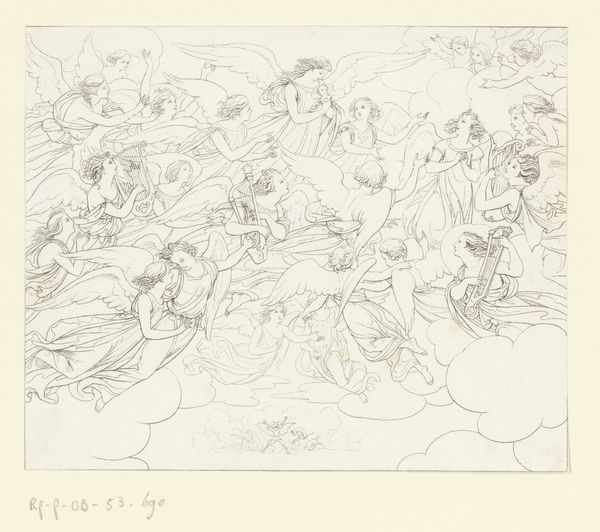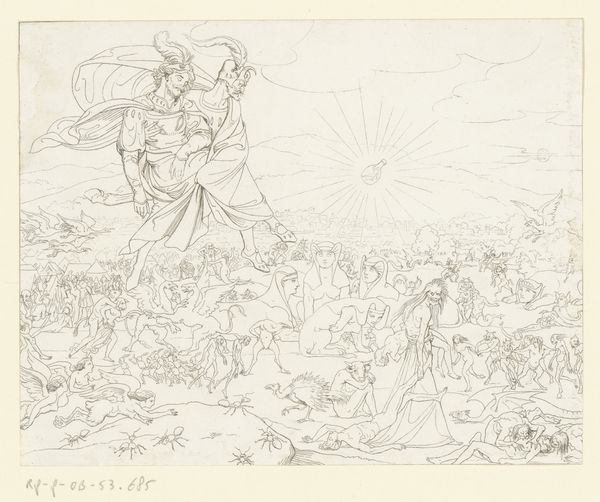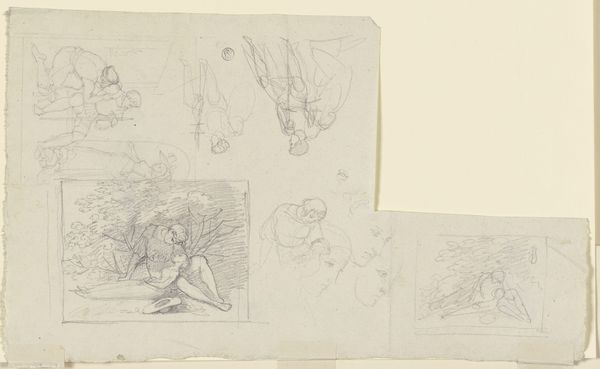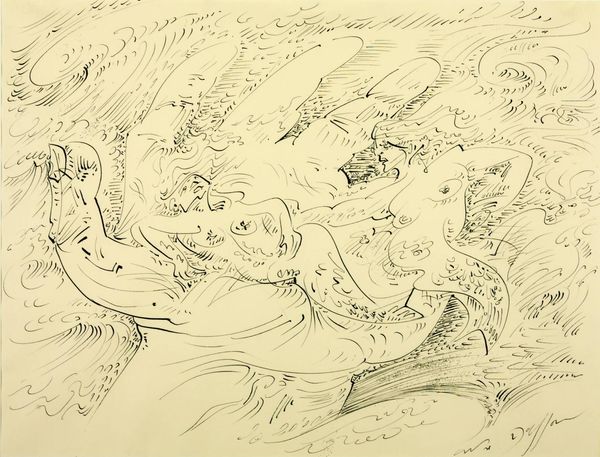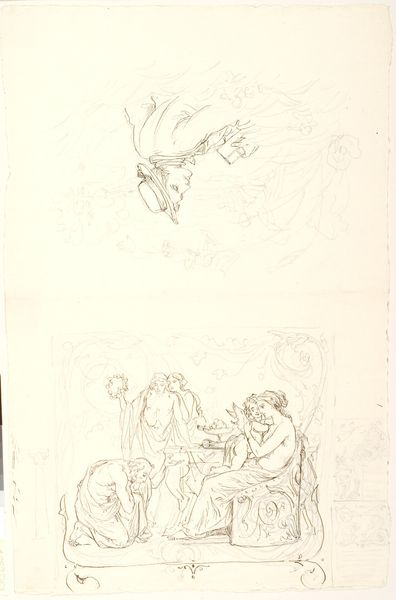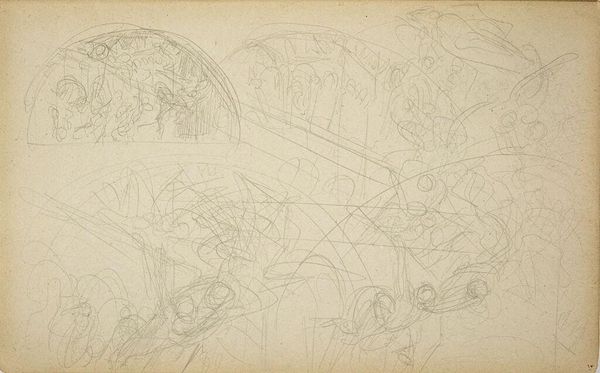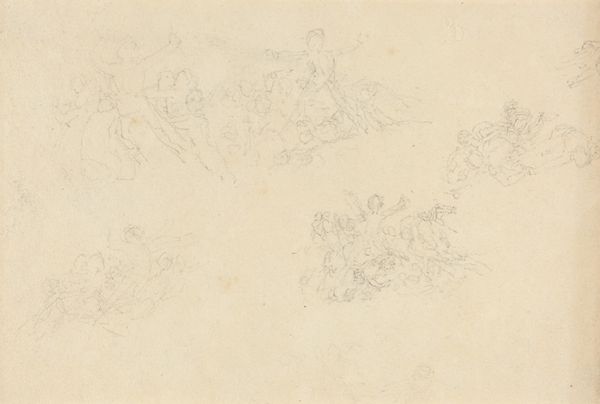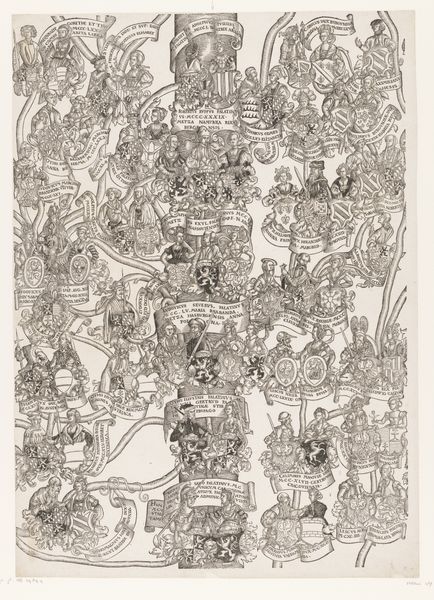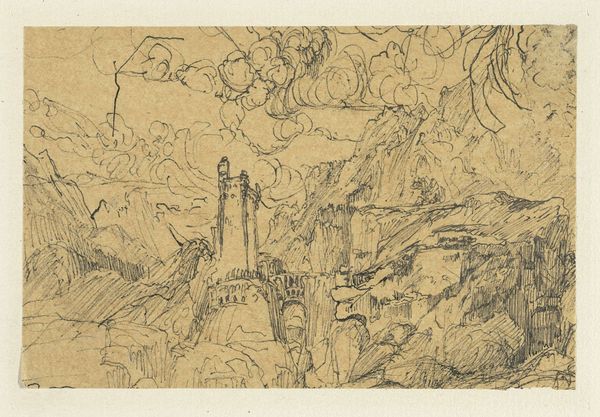
drawing, ink, pen
#
drawing
#
allegory
#
pen illustration
#
figuration
#
ink line art
#
ink
#
romanticism
#
pen work
#
pen
#
history-painting
Dimensions: height 170 mm, width 210 mm
Copyright: Rijks Museum: Open Domain
Editor: Here we have Moritz Retzsch's pen and ink illustration for Goethe's *Faust*, created around 1828. The swirling figures and dramatic contrast between the celestial and monstrous elements give it a distinctly theatrical feel, almost like a stage design. How do you interpret this work in its historical context? Curator: I see this work deeply embedded in the burgeoning public sphere of the early 19th century. *Faust*, in itself, was a cultural phenomenon, capturing the anxieties and aspirations of a society grappling with rapid change. Retzsch's illustrations, disseminated through prints and books, became instrumental in shaping the public's understanding of Goethe’s complex themes. Editor: So, the imagery served a larger cultural purpose beyond just illustrating a story? Curator: Precisely. The meticulous pen work and the stark contrast between light and shadow evoke the Romantic obsession with the sublime, a concept highly marketable to the growing bourgeois audience. This illustration wasn’t just about personal artistic expression. It played a significant role in democratizing access to high culture. Editor: It’s interesting how widely available artworks shaped perspectives about things such as morality, or access to intellectual spheres at that time. Are there any specific compositional elements that strike you in terms of how the artwork addresses moral interpretation, given its role in democratizing access to these higher spheres of society? Curator: Notice how the divine figures occupy the upper register, bathed in light, while the monstrous entities dwell in the shadowed depths. It's a visual embodiment of the struggle between good and evil, a struggle being actively discussed in salons and coffee houses of the era. Retzsch, through prints and illustrations, turned art into an accessible commodity that invited debate and personal moral negotiation for every member of society. Editor: So it's the distribution mechanism and public discussion surrounding it that gives this illustration much of its power, rather than just inherent aesthetic qualities? Curator: Exactly. The visual is impactful but its real force lies in its integration into the socio-political discourse. It's fascinating to consider art not just as an aesthetic object, but as a social actor, isn't it? Editor: It completely reframes how one views the influence an image can have. Thanks for broadening my understanding!
Comments
No comments
Be the first to comment and join the conversation on the ultimate creative platform.
